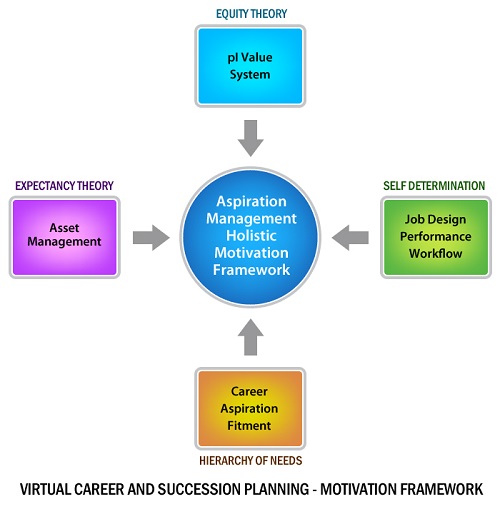Difference between Career Planning and Succession Planning
Both Career Planning and Succession Planning involve an element of transition in their respective disciplines and whatever the two different vocabulary signify. Moreover, the two points in discussion both deal with an already systematic process that is being followed to ensure there is no void left between two different stages. While career planning is in respects to the world of abilities either acquired through education or experience, succession planning has to do with a number of practices among them politics which involves dictatorships and monarchies, business among others. The latter will form the rest of the discussion, however, since we will be looking to distinguish between career planning and succession planning.
Definition of terms
Career planning
Career planning is achieved by managing the different aspects of your career in a constant and systematic manner/process. It involves getting together information and knowledge in order pertinent to your chosen career that can guide you in making informed decisions about your future education, training and career choices.
It can help you to assess your skills and interests in order to find jobs and career paths that are right for you and the direction that you want your profession to take. Furthermore, one can also describe career planning as it is the nonstop practice of thinking about your welfare, principles, skills as well as your inclination; exploring life, work and learning options available to you; ensuring that your work fits with your personal circumstances and your future aspirations.
On the other hand, Succession planning involves discerning new leaders and then training them to replace old leaders. Replacement is necessary when the older leaders can no longer perform their duties owing to their age, disabilities, or inability to cope with the demands of the leadership position. Succession planning ensures that there are always experienced and proficient leaders that are prepared to take these roles as they become available. It is also important to note that alternate planning for specific roles is paramount in succession planning. Excellent succession planning is mainly concerned with developing a pool of talented individuals that can fill in positions as they are vacated. This ‘feeder group’ of potential leaders should be able to produce leaders for the entire chain when need arises.
Differences
After the definition of the two terms and distinguishing their meanings, below is a further exploration in the different entities where these terms find themselves in contrast.
Process and practice
The process of career planning is also known as career development stages and career growth representation. It involves six major steps which help you in planning your career and deciding about your future and they are as follows;
- Self-assessment – consider the current status of your career.
- Assess skills – understanding your current skills, knowledge and personal qualities can help you match them to jobs you may like to do.
- Think about your options – consider your career options and identify possible jobs that match your skills and interests.
- Build up your career plan – developing a career plan will help you work out your short term career goals and the next steps you should take to help you put your career plan into action.
- Analyze and alter your career plan – planning your career will increase your chances of achieving your career goals, but it is also important to remain flexible. A career plan developed for one stage of your career may no longer be suitable once you have reached certain goals.
- Exploitation – once you are done with small goals and the main aim, the next step remains to start implementing your plans.
For succession planning, its process involves five major steps. Companies come up with detailed models to describe their succession and development practices. Most reflect a repeated series of activities which include these essentials:
- Identify key roles for succession or replacement planning.
- Define the capabilities and motivational report required to undertake those roles.
- Assess people against these conditions – with a future orientation.
- Identify polls of talent that could potentially fill and perform highly in key roles.
- Enable employees to be ready for advancement into key roles – primarily through the right set of experiences.
Role of advisors
Career advisers, who are also known as career counsellors, coaches or practitioners, can help you develop a career plan and find a career that suits your skills and interests. They can help you to;
- recognize your career objectives
- assess your current skills and skills you may wish to develop
- review different career options
- develop a modified career plan
- Deal with significant change e.g. moving to a new occupation can be tough and exhausting.
Although you are working in a place you like, or you know where you want to be working, you may still want to seek professional career advice to help achieve your career goals;
- identifying opportunities to advance your career
- improving your system of contacts
- converting to retirement
When it comes to succession planning, one cannot underestimate the part that advisors will play in ensuring that the planning is successful and has the desired output. These advisors play a critical role in succession planning because of the counsel they offer before and during the planning stages of succession endeavors. This process is comparatively long if the successors want to be accepted by all employees. The advisors’ responsibility is to assist these employees reach their full leadership potential.
Research
Career planning involves some type of self-evaluation on what you are capable and not capable of doing. You need to discover your transferable skills, plan a career journal, not underrate your soft skills and find a mentor.
The present research and studies on succession planning stipulate that determining the objectives and goals of the leadership position is essential in the effective planning for suitable leaders to take over. These objectives include:
- identify individuals from the feeder group that have the ability to assume greater roles within the company
- Create a platform to support these identified individuals in terms of providing them with essential skills, knowledge, and experience.
- involve the leadership in providing programs that help in the development of highly skilled and talented individuals
- Build a comprehensive and centralized data base , which will prove essential in future staffing decisions
Benefits and Importance
Career planning is essential as it guides you on the steps that you should take in order to achieve your career objectives and goals. This type of planning enables you to understand the path that you must take in order to reach your career destination. Planning will help you identify your shortfalls as well as your strengths, to give you an understanding of what you need to work on in order to meet your career goals. It makes you aware of your strength and weaknesses and the skills and knowledge that are required to achieve your goals in future. Most importantly, career planning is beneficial in helping you to deal with change proactively than reactively.
Critical to the succession-management process is a fundamental notion that argues that top talent in the corporation must be managed for enterprise to reap maximum benefits.
Summary of the Differences between career planning and succession planning
| TOPIC | CAREER PLANNING | SUCCESSION PLANNING |
| Definition | Process of continuously thinking about your welfare, knowledge, and skill set as well as the development options available to you | Succession planning entails mostly identifying able, skilled potential leaders who can replace the current leaders in case they retire, move to another position, or die. |
| Process and practice | Involves six major steps revolving around determining and defining your career path. These steps also play an integral role in helping you make ideal choices regarding your future. | The process of succession planning entails five major steps that nearly every enterprise, or political-social set up employs. Usually, the process of succession planning usually involves several recurring activities |
| Role of advisors | Career advisors play an essential role in helping one develop a tentative career plan. They can also guide you in finding a career that matches your particular skill set and ambitions | Advisors assist in succession planning by guiding the process of identification of potential leaders as well as the change between the current and future leaders |
| Research | You need to investigate and discover your inherent weaknesses, talents, knowledge sets. You also need to find out your core competencies as well as your soft skills. | Clear objectives are paramount to the effectiveness of a succession plan |
| Benefits and Importance | Career planning is essential to your identification of a proper career, your growth in that career, and ultimately the pleasure you derive from progressing in that career | Succession planning enables the proper management of top talent within the enterprise for the benefit of the latter. |
- Difference between Traditional Commerce and Ecommerce - February 16, 2018
- The Differences between Copay and Deductible - February 6, 2018
- Differences between Personal Property and Real Property - January 29, 2018
Search DifferenceBetween.net :
Leave a Response
References :
[0]Segers, S, B & Gijselaers, W, M (2011), The Personal Development Plan Practice Questionnaire (PPQ): The development and validation of an instrument to assess employees` perception of the personal development plan practice; International Journal of Training and Development. 15 (2): 249-270.
[1]Rosenberg, D, M (n.d.) The Career Planning Process, Planning Your Career Step-By-Step.
[2]Les, N (2011). Business Exit Planning: Options, Value Enhancement, and Transaction Management for Business Owners. USA: John Wiley & Sons. p. 178.
[3]Carlo, S & Guido, C. (2014) Transitional Leadership of Advisors as a Facilitator of successors` Leadership construction PDF; Family business Review.
[4]https://commons.wikimedia.org/wiki/File:Aspiration_Management_social_succession_planning_by_ken_georgie_mathew.jpg


